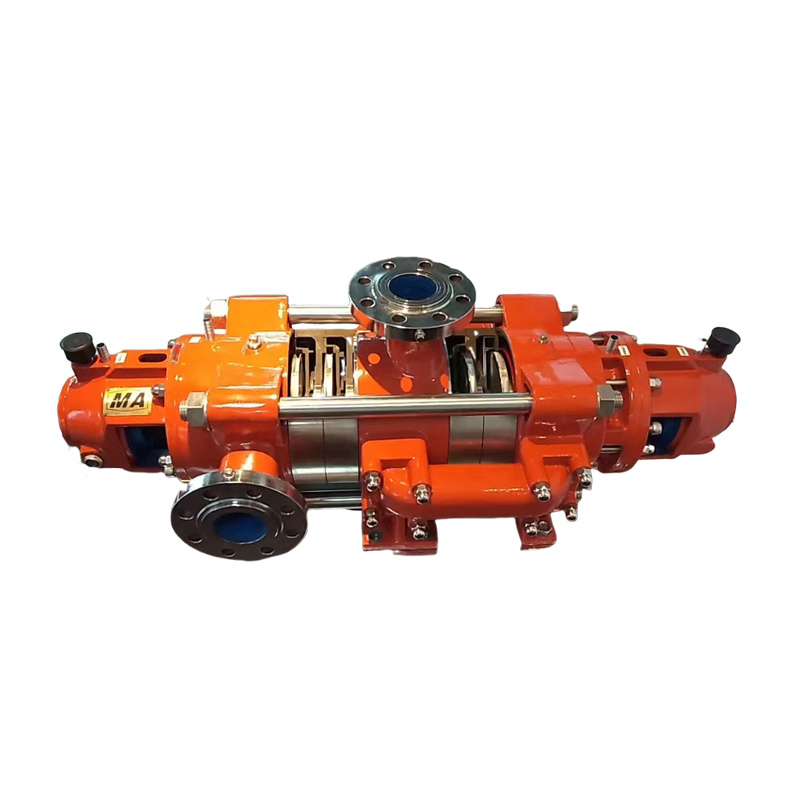Understanding Multistage Pumps: A Comprehensive Guide for Industrial Applications
Jun 14,2025

Multistage pumps are critical components in many industrial applications, designed to handle high flow rates and deliver fluid at elevated pressures. Unlike single-stage pumps, which are limited to providing fluid movement at a single pressure level, multistage pumps consist of multiple impellers and stages arranged in a series. This configuration enables them to achieve higher discharge pressures, making them ideal for applications such as water treatment, chemical processing, and oil and gas production.
The fundamental operation of a multistage pump involves the transfer of kinetic energy from the impeller to the fluid, which is then converted into pressure energy. Each impeller increases the fluid's velocity, and as the fluid moves through the pump, it passes through a diffuser that converts this velocity into pressure. The cumulative effect of multiple stages allows for significant increases in pressure, making multistage pumps suitable for tasks that require moving fluids over long distances or to higher elevations.
One of the key advantages of multistage pumps is their versatility. They can handle various types of fluids, including clean water, corrosive liquids, and slurries, depending on the materials of construction. Additionally, they are often used in applications where consistent flow and pressure are essential, such as in boiler feedwater, irrigation systems, and high-rise building water supply.
When selecting a multistage pump, several factors must be considered. The first is the required flow rate and total dynamic head (TDH). Understanding the system's requirements, including the elevation change and the friction losses in the piping system, is crucial for selecting a pump that will operate efficiently and reliably. Additionally, materials of construction, such as stainless steel or cast iron, should be chosen based on the fluid's characteristics to prevent corrosion and ensure longevity.
Moreover, the efficiency of a multistage pump can significantly impact operational costs. Pumps that are well-designed and correctly sized can reduce energy consumption, which is a critical consideration in today's economy focused on sustainability and efficiency. Regular maintenance, including monitoring for wear and tear and ensuring proper lubrication, is also vital to prolonging the pump's lifespan and maintaining optimal performance.
In conclusion, multistage pumps play an essential role in various industrial applications, providing reliable and efficient fluid movement over significant distances. Understanding their operation, selection criteria, and maintenance requirements can help professionals optimize their systems and ensure longevity and performance in demanding environments. As industries continue to evolve, the significance of effective pumping solutions remains paramount, making multistage pumps an indispensable asset in modern industrial operations.
The fundamental operation of a multistage pump involves the transfer of kinetic energy from the impeller to the fluid, which is then converted into pressure energy. Each impeller increases the fluid's velocity, and as the fluid moves through the pump, it passes through a diffuser that converts this velocity into pressure. The cumulative effect of multiple stages allows for significant increases in pressure, making multistage pumps suitable for tasks that require moving fluids over long distances or to higher elevations.
One of the key advantages of multistage pumps is their versatility. They can handle various types of fluids, including clean water, corrosive liquids, and slurries, depending on the materials of construction. Additionally, they are often used in applications where consistent flow and pressure are essential, such as in boiler feedwater, irrigation systems, and high-rise building water supply.
When selecting a multistage pump, several factors must be considered. The first is the required flow rate and total dynamic head (TDH). Understanding the system's requirements, including the elevation change and the friction losses in the piping system, is crucial for selecting a pump that will operate efficiently and reliably. Additionally, materials of construction, such as stainless steel or cast iron, should be chosen based on the fluid's characteristics to prevent corrosion and ensure longevity.
Moreover, the efficiency of a multistage pump can significantly impact operational costs. Pumps that are well-designed and correctly sized can reduce energy consumption, which is a critical consideration in today's economy focused on sustainability and efficiency. Regular maintenance, including monitoring for wear and tear and ensuring proper lubrication, is also vital to prolonging the pump's lifespan and maintaining optimal performance.
In conclusion, multistage pumps play an essential role in various industrial applications, providing reliable and efficient fluid movement over significant distances. Understanding their operation, selection criteria, and maintenance requirements can help professionals optimize their systems and ensure longevity and performance in demanding environments. As industries continue to evolve, the significance of effective pumping solutions remains paramount, making multistage pumps an indispensable asset in modern industrial operations.
PREVIOUS:
Contact Us
E-mail :
liu@cnpumpmade.com
WhatsApp:
+8615028256698
Address:
Nanyang Industrial Park, Shifo Town, Anguo City, Hebei Province, China







